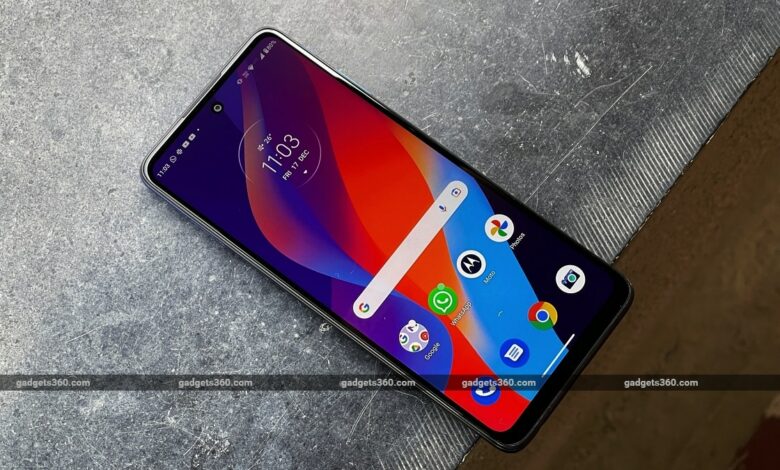India smartphone market grew 12 percent in 2021: Canalys

India’s smartphone market grew by 12 percent in 2021 despite a rough start to the year due to the second wave of COVID-19, a report said. Xiaomi remained the market leader, followed by Samsung. However, Xiaomi’s own rival and BBK Electronics subsidiary Realme grew by a whopping 25 percent year-on-year to reach the third position in the market in the fourth quarter. Other BBK subsidiaries namely Vivo and Oppo managed to grab the fourth and fifth positions respectively during the quarter.
Analyst firm Canalys said in its final report On Monday, it was reported that 162 million smartphones were shipped in India in 2021, up from 144.7 million shipments in 2020. This represents a year-on-year growth of 12 percent.
Xiaomi shipped a total of 40.5 million units in 2021 to maintain its market leadership, with a 25 percent share. However, the company failed to record annual growth, with both its shipments and market share declining compared to 2020 results in which it shipped 40.7 million units and had a 28 percent market share, Canalys said.
Unlike Xiaomi, Samsung grew by five percent year-on-year in 2021, with 30.1 percent of shipments recorded. The South Korean company also retained its second place in the market by capturing a 19 percent share.
However, Samsung’s market share fell to 20 percent from the previous year. Still, shipments of Galaxy phones increased by 1.5 million units from the 28.6 million recorded in 2020, the company said.
Canalys noted that Vivo came in third place year-on-year, with a 16 percent share that the company acquired after shipping 25.7 million units in 2021. However, the company’s annual growth in the year declined by four percent, down from 19 percent in the previous year.
Vivo sister Realme, on the other hand, managed to achieve 25 percent growth last year. The company’s smartphone shipments rose from 19.5 million units in 2020 to 24.2 million units in 2021, taking its share from 13 percent to 15 percent, according to Canalys.
“Realme’s record shipments were made possible by innovations in planning and inventory management, leading to good supply of mass market smartphones such as the Narzo 50A and C11,” Canalys analyst Sanyam Chaurasia said in a prepared statement.
Oppo, once the parent company of Realme, also recorded a six percent annual growth in 2021, shipping 20.1 million smartphones that year, capturing a 12 percent market share.
Canalys said Oppo shipped 19 million units, capturing 13 percent market share for the year, down from 2020 figures.
Indian smartphone shipments and annual growth in full 2021 according to Canalys
| Supplier | Q4 2021 shipments (in millions) | Market share Q4 2021 | Q4 2020 shipments (in millions) | Market share Q4 2020 | Annual growth |
|---|---|---|---|---|---|
| Xiaomi | 9.3 | 21 percent | 12 | 27 percent | -22 percent |
| Samsung | 8.5 | 19 percent | 9.2 | 21 percent | -7 percent |
| Realme | 7.6 | 17 percent | 5.1 | 12 percent | 49 percent |
| Living | 5.6 | 13 percent | 7.7 | 18 percent | -27 percent |
| Opposite | 4.9 | 11 percent | 6.1 | 14 percent | -19 percent |
| Others | 8.5 | 19 percent | 3.8 | 9 percent | 126 percent |
| Total | 44.5 | 100 percent | 43.8 | 100 percent | 2 percent |
In the fourth quarter alone, the smartphone market in India grew by two percent to 44.5 million shipments. However, the units shipped in the quarter were down compared to the 43.8 million units shipped in the fourth quarter of 2020, according to the Canalys report.
Xiaomi managed to maintain its market leadership in the fourth quarter, with 9.3 million shipments and a market share of 21 percent. However, the company shipped 22 percent fewer phones than in 2022. It had shipped a total of 12 million units in the fourth quarter of 2020, with a market share of 27 percent, the report said.
Samsung also saw a seven percent decline in its annual growth in the fourth quarter, as the company shipped 8.5 million units. It saw 9.2 million shipments in the same quarter last year.
However, unlike Xiaomi and Samsung, Realme came in third after posting 49 percent annual growth in the quarter. The company shipped 7.6 million units and took 17 percent market share, Canalys said. The figures seem significant compared to the 5.1 million shipments and 12 percent market share in Q4 2020.
Vivo and Oppo came in fourth and fifth in Q4. While Vivo shipped 5.6 million units and captured a 13 percent market share, Oppo shipped 4.9 million units and captured an 11 percent market share. However, both Vivo and Oppo saw a decline of 27 percent and 19 percent respectively in their annual growth rates in the quarter, the Canalys report showed.
Reliance Jio’s JioPhone Next also gained momentum in the fourth quarter, making a strong start with several million units sold, the analyst firm said.
Similarly, Tecno and Infinix, the subsidiaries of Shanghai-based Transsion Holdings, increased their brand awareness in the market in the quarter.
Indian smartphone shipments and annual growth in Q4 2021 according to Canalys
| Supplier | Q4 2021 shipments (in millions) | Market share Q4 2021 | Q4 2020 shipments (in millions) | Market share Q4 2020 | Annual growth |
|---|---|---|---|---|---|
| Xiaomi | 40.5 | 25 percent | 40.7 | 28 percent | 0 percent |
| Samsung | 30.1 | 19 percent | 28.6 | 20 per cent | -5 percent |
| Living | 25.7 | 16 percent | 26.9 | 19 percent | -4 percent |
| Realme | 24.2 | 15 percent | 19.5 | 13 percent | 25 percent |
| Opposite | 20.1 | 12 percent | 19 | 13 percent | 6 percent |
| Others | 21.2 | 13 percent | 10 | 7 percent | 111 percent |
| Total | 162 | 100 percent | 144.7 | 100 percent | 12 percent |
Canalys predicted that 5G will become “significantly more accessible” in 2022, both in terms of coverage and price.
“5G-enabled smartphones will continue to come down in price amid intense rivalry among vendors, but shipments will be suppressed in H1 2022 before the component shortage eases,” Chaurasia said. “Overall, India will see an upward trend towards future-ready technologies, with smartphones forming the core of the digital ecosystem and becoming increasingly essential to the daily lives of Indian citizens.”




